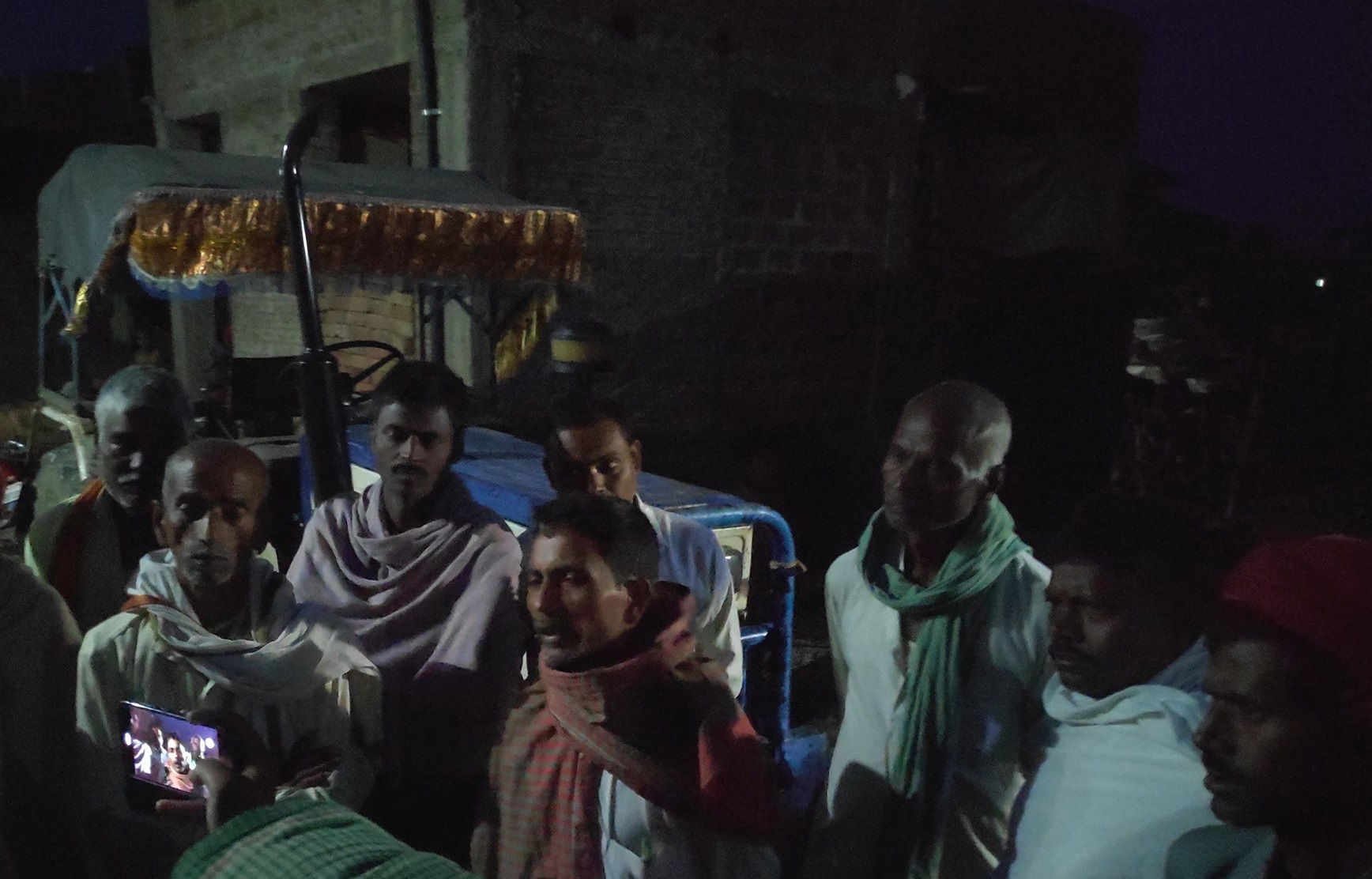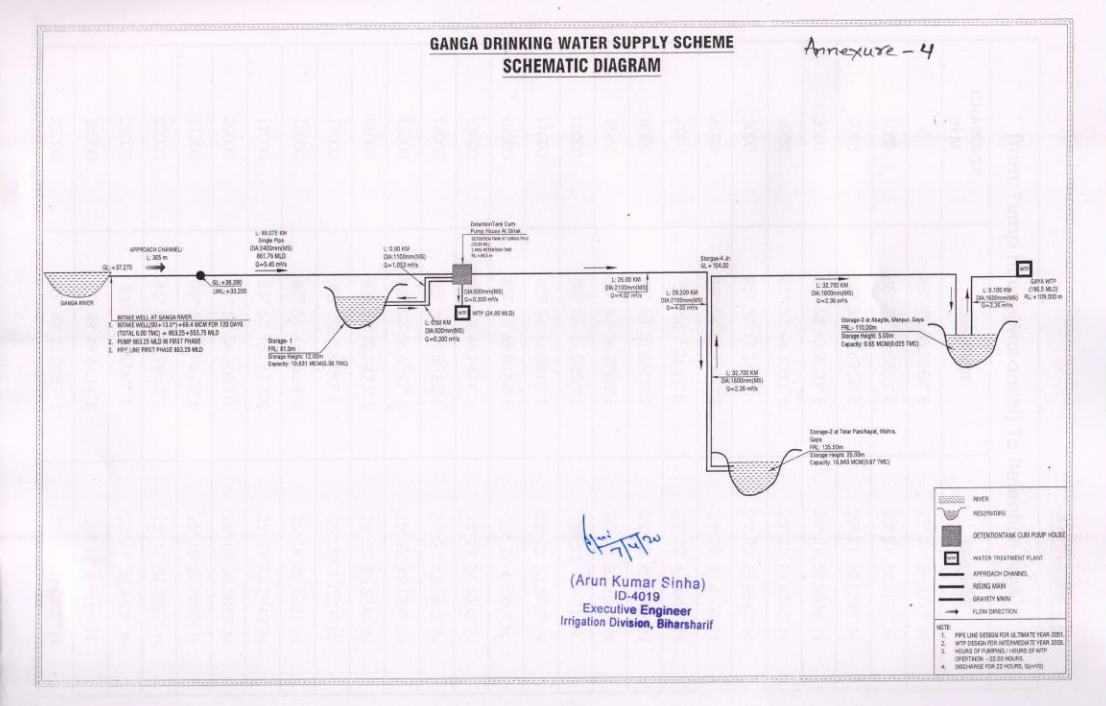Muddy waters: Villagers fear the Ganga Water Lift Scheme in Mokama, Bihar may adversely impact farming
Mokama Tal, known for cultivation of pulses, supports about 200,000 farmers and half a million agricultural labourers. Excessive flooding and silting has rendered 10,000 hectares uncultivable, and the new project may only increase their misery.


For some years now, waterlogging is persistent in Mokama, Bihar, and the silting has increased. This has left farmers worried. Photo: Daya Sagar
Umesh Kumar Ray and Rohin Kumar
Situated on the southern shore of the Ganga, Mokama Tal (lake), about 90 kilometres east of Bihar’s capital Patna, is called ‘dalhan ka katora’, or pulse bowl. It is spread over 1,06,200 hectares and supports 200,000 farmers and half-a-million agricultural labourers, some from neighbouring Jharkhand.
Farmers here undertake extensive cultivation of pulses, including moong (green gram), masoor (red lentil) and chana (split chickpeas) in their silt-rich fields.
However, the under-construction Ganga Jal Udbhav Yojana (Ganga Water Lift Scheme), approved by the Bihar cabinet in December 2019, has the local farmers worried, who fear the project will increase siltation and affect farming. This ambitious plan of chief minister Nitish Kumar hopes to send drinking water from the Ganga to Rajgir, Nawada, Gaya and Bodhgaya districts through a 190-kilometre underwater pipeline.

Brij Nandan Pathak, an activist striving to free the Falgu River in Gaya from encroachment, told Gaon Connection that the debate over the ongoing Ganga Water Lifting Scheme was a decade old. A meeting of experts, presided by Bihar agriculture minister Prem Kumar was convened at Gaya about a year ago. Pathak said he had opposed the sourcing of water from Mokama, saying that the scheme would be a proverbial ‘white elephant’.
“At the meeting, I told them that whether the government takes a loan or uses its revenue, it would be paid out of the public’s pockets. Instead of putting at stake thousands of crores of rupees in the name of resolving a problem, look at the existing water sources within the area,” Brij Nandan Pathak said.
However, Sanjay Kumar Tiwari, senior engineer (planning and monitoring) of Circle-3, Department of Water Resources, Bihar, told Gaon Connection that the Ganga Water Lift Scheme would not have any negative impact. “All kinds of studies have been undertaken and there shall be no negative impact,” he said.

Heavy siltation, increased flooding
Mokama Tal (lake), which is about 110 kilometres long and between six and 15 kilometres wide, is made up of many tals, including Bakhtiyarpur Tal, Baadh Tal and Fatuah Tal.
More than a dozen small rivers, including Morhar, Lokayan, Panchane, Seiva and Kumhari, which originate in the Chota Nagpur plateau, flow through Mokama Tal.
Hundreds of ahar-pynes, a canal-like serpentine irrigation structure indigenous to South Bihar, are linked to these rivers and it is through them that water from the Ganga reaches the fields of Mokama. During the monsoon, vast stretches of the fields in Mokama are submerged in the floodwaters of the Ganga. Once the water drains, cultivation resumes. However, for some years now, the waterlogging is persistent and the silting has increased. This has left farmers worried.
Last year, farmers had to abandon sowing in about 10,000 acres (4,046 hectares). This has also become an election issue. The state is in the midst of three-phase polls.
This flooding has changed sowing patterns too. Till the 1990s, farmers would sow chana by Dussehra to harvest its flowers and greens to cook a traditional meal during the Chhath Puja (celebrated six days after Diwali). “Now, we sow after Chhath, because the fields are still flooded,” Arvind Singh, who owns about 70 bighas (9.3 hectares) farmland in Mokama, told Gaon Connection.
Excessive silting in the Ganga has extended to the Harohar River, considered the lifeline of the Mokama-Barahiya Tal area.
During the monsoon, water accumulates in the fields of Mokama Tal. In September, when the water level of the river Ganga starts receding, the water reaches Harohar River via the ahar-pynes, from where it goes back to the Ganga.
However, due to silting, the water holding capacities of both the Harohar and Ganga have gone down. And so, Mokama Tal remains waterlogged beyond the stipulated time. Harohar has not been dredged for the past 25 to 30 years, say local residents. Anand Murari, a farmers’ leader from Mokama concurred with this claim.
“The problem of silt in Mokama Tal began in the 1990s. Earlier, the Ganga used to flow below the surface level of Mokama Tal, but it is at par now. So, it takes a long time for the water to drain out of Mokama Tal during excess rain,” Arvind Singh said.

Farmers’ woes
Silt pushes up the water level of the river and aggravates the flood situation in north Bihar. In the summer, the silt weakens the flow of the river. The silt does not come just from the Ganga, but also from the hundreds of pynes and the dozen small rivers passing through Mokama Tal.
The farmers have resigned themselves to the lack of administrative action. “The Mokama Tal Vikas Yojana has not been implemented so far. The canals and tributaries are not being dredged. Every time, a few days before the elections, they will remove a little bit of silt,” Murari complained to Gaon Connection.
Already, the farmers here hold the Farakka Barrage, built at a cost of Rs 150 crore in 1975 to tackle the Kolkata Port’s silt issues, responsible for their current problems. A government engineer Kapil Bhattacharya had then argued that the problem of silt would be further aggravated by the formation of the barrage. He was overruled, but has been proved right now. The Farakka Barrage has begun silting the Ganga instead, and in turn, Mokama.
Last year, a Central government constituted expert committee identified 11 hotspots in the catchment area of Ganga from where immediate silt removal was recommended. The report is with the central water resources department, but its submission has not been made public. Addressing the media, the expert committee member Ramakar Jha had cautioned. He was quoted as saying: “Silt deposit on a large scale in the Ganga, particularly from Buxar in Bihar to Farakka in West Bengal, a roughly 544 kilometre stretch, is a big problem. There is no doubt about it… A strong suggestion was made to remove silt deposits in the river bed from 11 places for smooth flow and to control and manage floods.” He had said that if silt was not removed from these 11 places within the next five years, Bihar would be subjected to even worse episodes of floods.

Ganga Water Lift Scheme
In this backdrop, farmers, who are already facing a severe problem with excessive silt deposits, fear the under-construction Ganga Jal Udbhav Yojana (Ganga Water Lift Scheme), approved by the Bihar cabinet in December 2019, will only add to their woes. The scheme proposes to send drinking water from the Ganga to Rajgir, Nawada, Gaya and Bodhgaya districts through a 190-kilometre underwater pipeline. The Central Ground Water Board data has said that groundwater levels in these areas have gone down significantly — about 5.06 metres — in the last decade — and they would benefit from the scheme.
According to the state’s Department of Water Resources, reservoirs are being constructed with a capacity of 9.81 million cubic metres (mcm) in Goda Katora area of Rajgir, 18.53 mcm at Gaya and 1.29 mcm at Abgila Pahartali. This is estimated to cost Rs 2,836 crore.
While waterlogging is causing problems in Mokama, in Gaya, traditional water sources are disappearing at a rapid rate. According to Brij Nandan Pathak, there were around 200 ponds in Gaya district, half of which have disappeared, or filled up to enable construction. Water scarcity remains one of the major reasons for migration from this area, which falls under the Magadh region.
Farmers feel this scheme will prove to be further detrimental to agriculture in the region. Murari and other farmers wonder if it makes better sense to harvest rainwater at Rajgir than lay a pipeline over nearly 200 kilometres. This will help in two ways — improve the water table in affected areas and reduce waterlogging in Mokama, allowing farmers to raise two crops instead of one, they said.
According to Ravindra Pathak, water expert and co-ordinator of Magadh Jal Jamaat, an organisation that seeks to revive water sources in Gaya, there are now only a few ponds left in Gaya, of the earlier 200. Even if these ponds are restored, a large population in the city can be saved from water scarcity, he told Gaon Connection.

Both the experts say the Ganga Water Lift Scheme is not environmentally sound. They support the use of the existing resources within these cities in view of their historical, and traditional importance.
Marine biodiversity is another issue. The Ganga enters Bihar near Buxar and flows across its heart to West Bengal. Experts believe extraction of water from Ganga will have a negative impact on the Gangetic ecology and aquatic organisms.
In Bihar, within a span of 300 kilometres of the Ganga, from Mokama to Manihari, 700 dolphins thrive. Dolphin presence is also indicative of water clarity.
Speaking to Gaon Connection, Sunil Kumar Chaudhary, retired professor of Tila Manjhi University, who has been working on issues plaguing the Ganga river for long, questioned the feasibility of the project. “Water received by the Ganges during the monsoon is utilised through the year. Artificial extraction of water will have a grave impact.”
Read the three-parts of the story in Hindi.
गंगा उद्भव योजना: गाद से बेहाल मोकामा टाल
गंगा उद्भव योजना: मगध की जलसंचयन प्रणाली को क्यों नहीं मजबूत कर रही सरकार

